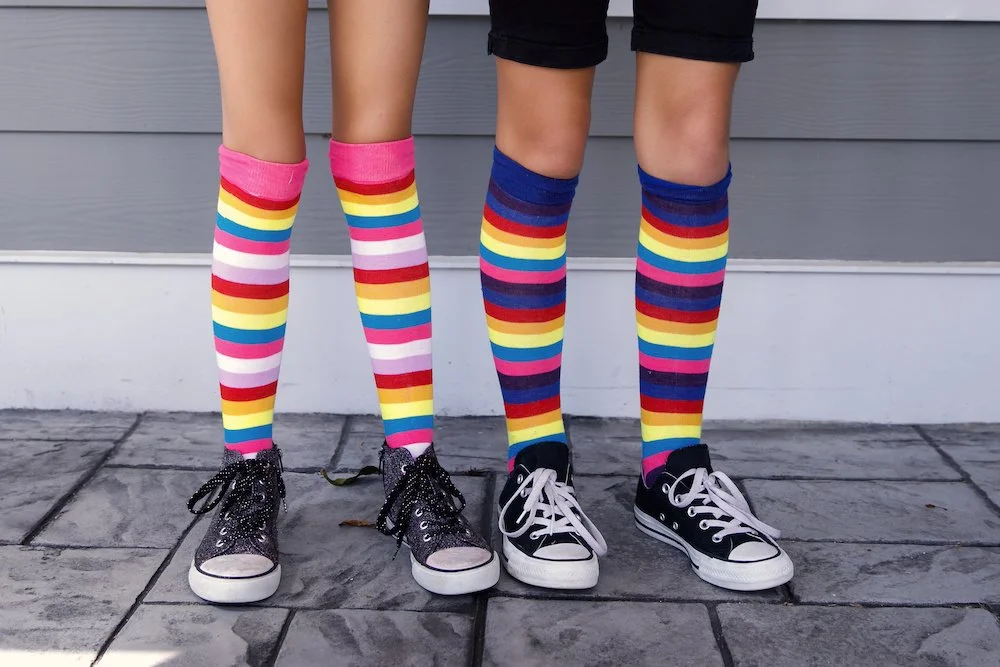Your Tween is Not a Mystery
There’s a stretch of years—somewhere between birthday parties with glitter glue and algebra worksheets—when kids are both. Both small and tall. Both plastic dinosaurs and private texts. Both fiercely independent and unexpectedly soft. We call it the tween years, but that word doesn’t do justice to how dynamic, elastic, and honestly beautiful this in-between can be.
Take today.
Morning started with Magna-Tiles and Matchbox cars on a living room rug. Two friends built a city with a hospital, a car wash, and a “secret garage” under the couch. They argued about whether the ramp should be higher (faster!) or lower (safer!), negotiated a compromise, and collapsed into giggles when a tiny blue convertible shot off the edge and disappeared under a bookshelf. This wasn’t “baby” play; it was design, physics, story, and teamwork wrapped in imagination. Yes, it was toy cars. Also yes, it was systems thinking. Tweens live in that overlap, toggling between fantasy and logic like they’ve got a dimmer switch instead of an on/off button.
By midday the vibe flipped. Different friend, different mode. Helmets on. Water bottles filled. A quick “We’re riding out!” floated down the hallway and the front door clapped shut. No itinerary. No Find My alerts pinging. Just legs and gears and a whole neighborhood turned into a map of possibilities. They returned hours later flush with sun and something else: the glow that shows up when a kid experiences unsupervised time and proves to themselves they can handle it. The story was thin on details—“We went to the park and then down by the creek and then…uh…somewhere”—and thick on the mood of it. Freedom leaves a scent you can smell before you hear the tires crunch back in the driveway.
After that came the curveball: yard work for the neighbor who’s recovering from a sprained ankle. Rake in hand, earbuds in, the tween moved leaves from lawn to curb with that earnest efficiency kids adopt when the job is real and the adult isn’t hovering. There’s pride in being useful to people outside your family. It’s a new channel of belonging, and tweens crave belonging the way younger kids want another bedtime story. They need to see themselves as contributing members of a larger circle.
Then home. Dinner talk slid from “Do bees sleep?” to whether the bike route included the big hill by the rec center. They ate seconds of roasted potatoes and didn’t notice the broccoli. By 8:45, the yawns were undeniable. Shower, pajama pants, lights out. The body keeps reminding the brain that growth takes energy; even on the cusp of teenagerdom, sleep wins.
If you’re looking for the essence of the tween bridge, it’s all there in one day:
They still play. Not ironically, not performatively—play that builds worlds and relationships. At the same time, they want the edges of the world to widen. A long bike ride unsupervised is less about rebellion and more about calibrating the compass: How far can I go? How do I navigate uncertainty? What happens if I take a wrong turn—and can I fix it?
They still need structure—helmets, a return window, a sense that a grown-up will notice if they don’t show up. And they need chances to author their own day within that structure. Freedom without scaffolding becomes chaos; scaffolding without freedom becomes stagnation. The bridge is built with both.
They are still tuned to adult approval (did you see me rake the yard?) yet beginning to value peer mirroring more. Two friend groups in one day is not indecision; it’s identity sampling. Kids this age try on versions of themselves like outfits: engineer-architect with Magna-Tiles, explorer-athlete on the bike, citizen-helper with the rake. The question underneath is constant: Who am I here?
They still live in their bodies. Big emotions, big hunger, big fatigue. We can help by respecting the signals: feed them real food, protect their sleep, and expect moods to swing without labeling them as “dramatic.” The hormones may not be in full sprint, but the neurology is already pruning and wiring at a staggering pace. Early nights after big days aren’t regression; they’re recovery.
And they still look to us—even as they roll their eyes—for cues on how to make sense of it all. Our job is less play-by-play announcer and more color commentator: notice what’s working, name the skills we see (“You and your friend problem-solved that ramp like champs”), and set a few clear guardrails without narrating every turn of the handlebars. We can ask better questions: “What felt fun? What felt sketchy? If you did the ride again tomorrow, what would you do the same or differently?” That invites reflection without interrogation.
A day like this isn’t a one-off; it’s the pattern. The tween bridge is crossed not with a single thunderclap moment, but with a series of ordinary days that add up to competence and character. Toys and tools. Imagination and initiative. Me-time, we-time, neighbor-time. The paradox is the point.
So when your not-quite-child, not-quite-teen heads out the door with a helmet and half a plan, smile and take a breath. When they come home tired and a little taller in spirit, hand them a rake if a neighbor needs help, a plate if dinner’s ready, and permission to go to bed early without commentary. This is how they learn the sturdy truth of growing up: you can still build cities on the rug and still build a life that reaches beyond your front door.
Do you have questions about your child’s development or your parenting? Scheduled a free 15-minute call with me here ⬇️
